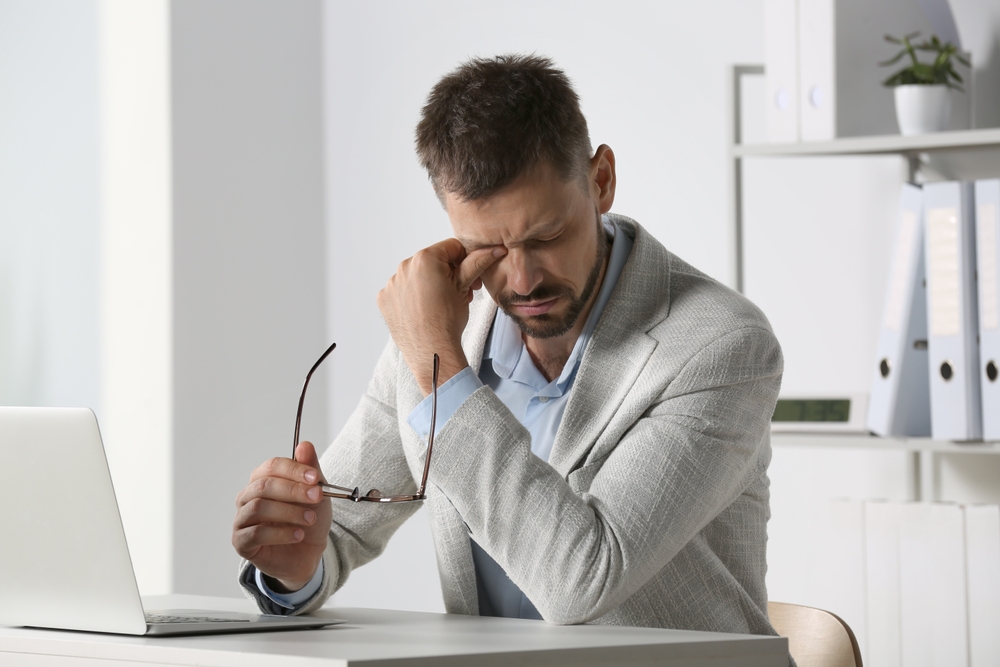What Are The Most Common Symptoms of Dry Eye?

Dry eye is an increasingly common condition that affects millions of people worldwide. Learning to identify dry eye signs can help you know when to seek treatment and manage aggravating complications.
Keep reading to learn more about dry eye, including some of the most common symptoms!
What is Dry Eye?
Dry eye occurs when the eyes do not produce enough quality tears to stay lubricated. Tears are crucial for maintaining eye health and clear vision as they perform various duties and coat the surface of your eyes.
Dry eye can develop due to many factors like aging, medications, environmental conditions, and health conditions. Some people may experience dry eye symptoms intermittently, while others may have a chronic condition that requires more advanced treatment methods.
What Are the Symptoms of Dry Eye?
People with dry eye often experience irritated, uncomfortable eyes as well as visual disturbances. Other common symptoms include:
Blurry Vision
Insufficient tears cause the eyes’ protective film to become unstable. This results in blurry vision that may fluctuate throughout the day.
If dry eye causes blurry vision, reading or driving may become more difficult.
Eye Redness
Lack of adequate lubrication causes increased eye irritation and inflammation. This often looks like general redness in the whites of the eyes or on the inner eyelids.
Eye Burning
Dry eyes typically feel scratchy and sting. There may be a painful, burning sensation, especially when blinking or doing visual tasks.
This can interfere with both work and leisure activities.
Tearing
While it may seem contradictory, watery eyes can be a sign of dry eye. Reflexive tearing due to irritation can occur as the eyes try to achieve comfort.
Excess tears may overflow without reaching the eyes.
Grittiness
Eyes with insufficient lubrication often feel uncomfortably gritty, almost like there is sand or debris in them. Rubbing typically does not relieve this distressing grittiness, although it can be tempting.
If you are experiencing symptoms of dry eye, it is essential to visit your eye doctor at Berg Feinfield for a thorough evaluation and treatment plan to prevent the condition from worsening.
How is Dry Eye Treated?
A variety of over-the-counter and prescription eye drops can effectively soothe dry eye symptoms in some cases. Your eye doctor may recommend increasing your use of artificial lubricating drops, using warm compresses to help improve the quality of your tears, or using humidifiers, as these solutions may provide relief.
Lifestyle changes like rest, hydration, and dietary improvements can also support dry eye treatment. If symptoms persist, your eye doctor may recommend additional personalized management options.
One advanced in-office treatment is the iLux. This device delivers controlled heat via infrared light to the eyelids and surrounding oil glands.
The warmth liquefies oil inside the meibomian glands in your eyelids to supplement the tear film. Your eye doctor may recommend the iLux to be used along with other therapies to provide additive dry eye relief.
This quick, simple, and comfortable in-office procedure is very effective in many cases. In order to find the best treatment for you, your eye doctor will thoroughly evaluate your eyes to determine the root cause of your symptoms.
Are you experiencing dry eye symptoms? Schedule an appointment at Berg Feinfield in Beverly Hills, CA, today!







